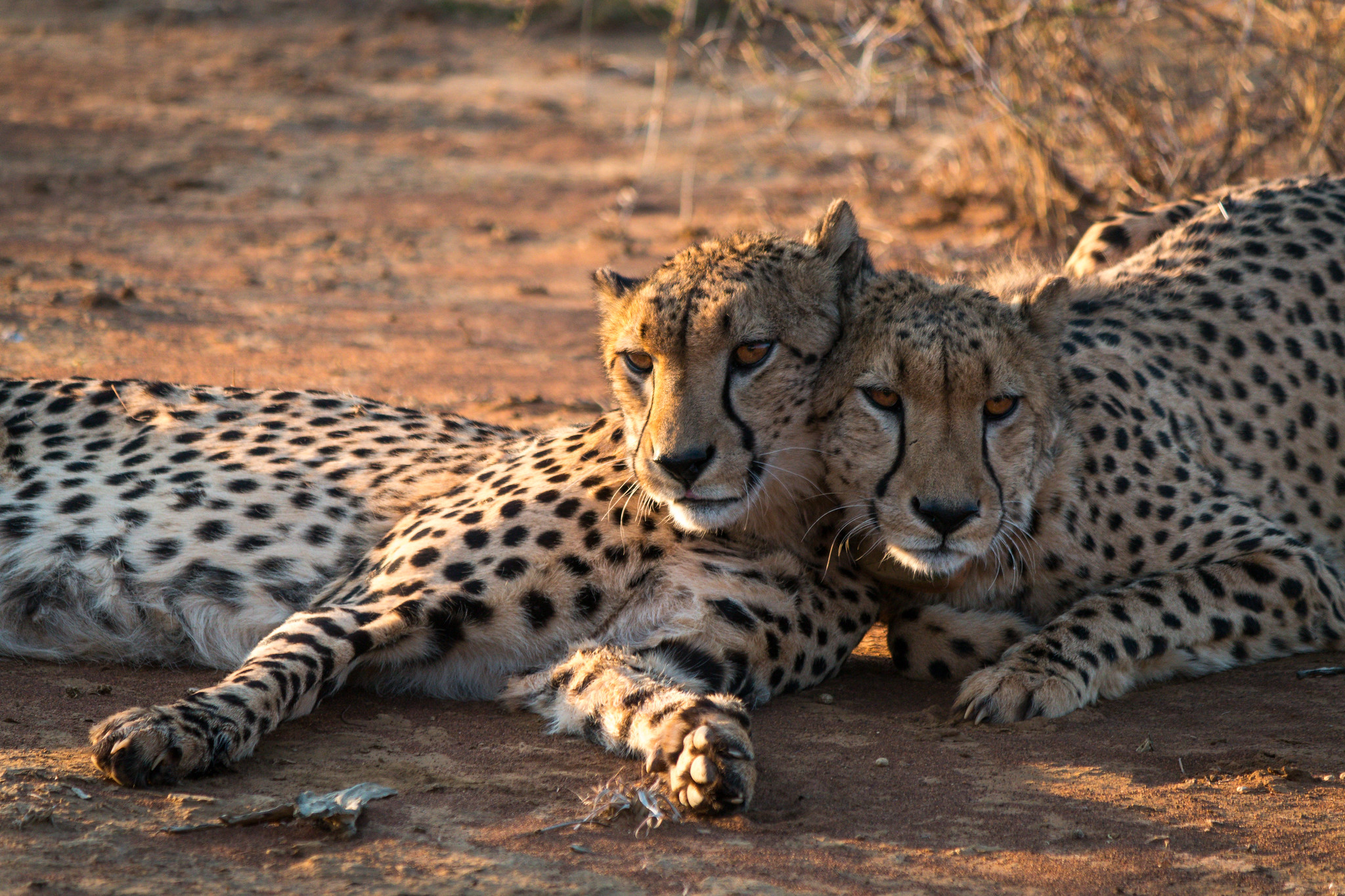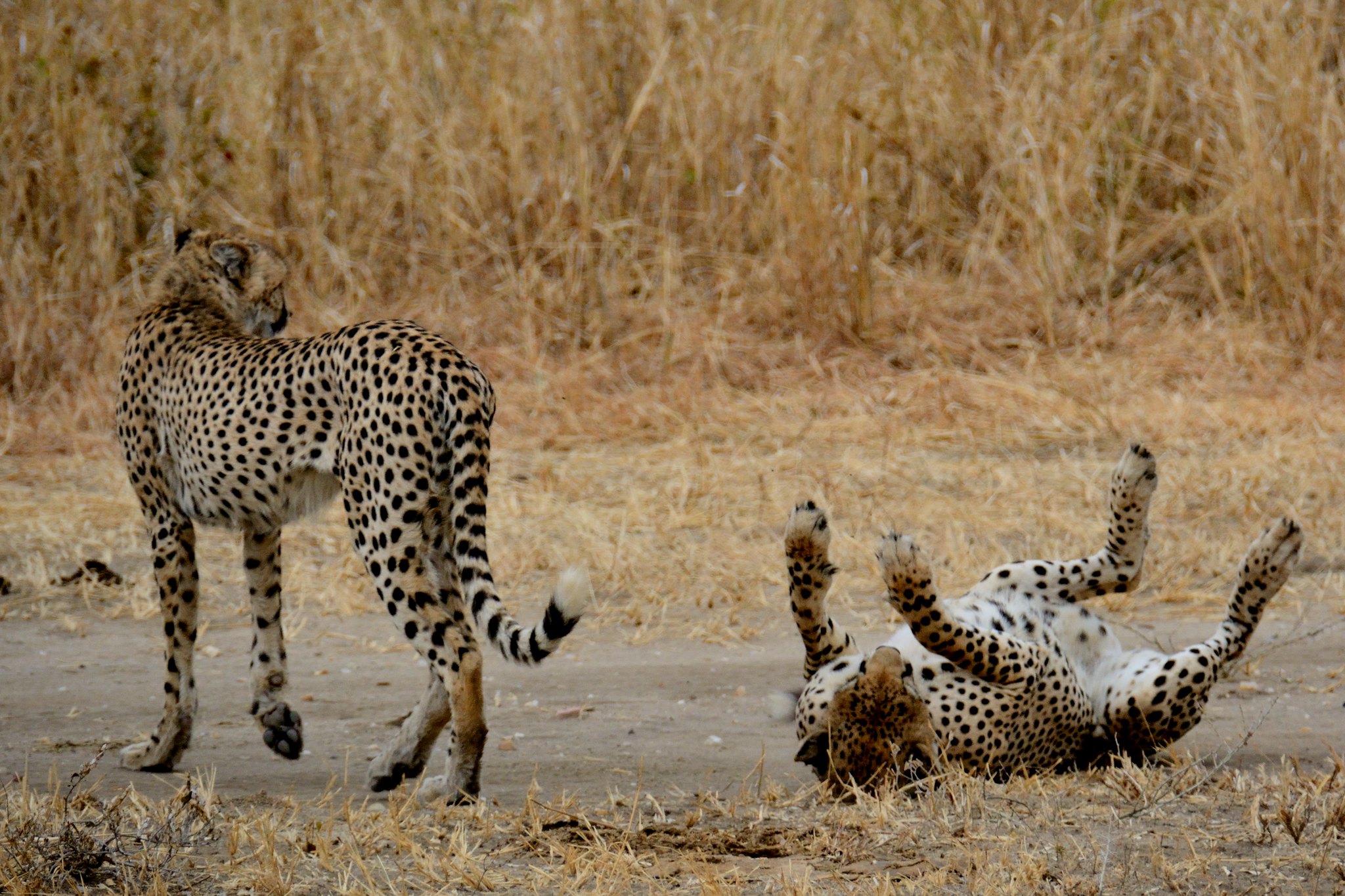10 Interesting Facts About Cheetahs
Here are 10 interesting facts about cheetahs. The cheetah can run as fast as 75 mph (121 kph), making it the fastest land animal in the world. It is a beautiful and quick member of the big cat family that is known for its unique look and speed. The head of a cheetah is small and round, and its neck is long. They have smooth, slender bodies with bright yellow coats speckled with round black dots. Ita, a Sanskrit word that means “spotted one,” is where the word “cheetah” comes from.

Here are 10 interesting facts about cheetahs that you might not know. The fierce, fast, and sneaky cheetah is as incredible as seen below.
1. The Cheetah is the oldest cat.
Cheetahs were the first cats that people kept as pets. People have kept cheetahs as pets for a very long time. In the past, rulers, kings, and pharaohs kept them to show how rich they were. Cheetahs were first domesticated around 32,000 years ago. People took cheetahs from the wild to keep as pets because they couldn’t easily have babies there.
There is no such thing as a cheetah being tamed, but in many ways, they are like cats today.
2. Cheetahs can’t fully pull their claws back.
Scientists named the cheetah Acinonyx jubatus in Latin in 1776. The Greek name for this animal is acininyx, which means “no move claw” because its claws don’t retract. Animals in the cat family can only fully retract their claws in certain situations, like when they are hunting.
As cheetahs have evolved, their claws have become partially retractable to help them keep a good grip on the ground while they chase moving food. Most big cats and some other felines retract their claws to remain silent while stalking prey. There are special claws on the cheetah’s feet that help it run quickly.
3. Cheetahs have spots on their bodies that help them see.
Are you having trouble telling the difference between a cheetah and a leopard?
You can see the answer right in front of you! Cheetahs have “malar stripes” or “malar marks” that go from their eyes to their mouths. They are long, black lines. Cheetahs have malar marks that block the brightest sunlight from the sky or wide-open savannas, helping them see better during the day. They help the cheetah hunt by keeping its eyes on its food.
Football players who draw black lines under their eyes are using the same method!
4. Cheetahs enjoy hunting early in the morning and late at night.
Crepuscular animals, like cheetahs, are active at dawn and dusk.
There are usually cheetahs hunting between 6 am and 10 am and 4 pm and 6 pm. Cheetahs are mostly busy during the day because they need to be able to see well enough to hunt by sight and speed.
In some places, cheetahs are busy at night, especially when the moon is full and there is a lot of light. Some cheetahs are exclusively nocturnal. Therefore, the strict rules that people try to set for cheetahs don’t always work.
5. The tail of a cheetah works as a drag.
In a straight line, prey doesn’t have much of a chance of beating a cheetah. Because of this, they often change direction, hopping, twisting, and turning to get away.
The cheetah’s tail is flat, like a rudder, while most cats’ tails are round and fluffy, like your house cat’s. The cheetah can make sharp turns at high speeds with its help. There is a counterbalance in the tail that moves from side to side, which helps the cheetah turn and stay balanced.
6. Cheetahs don’t roar; they meow, purr, and chirp instead.
The cheetah’s calls are much calmer than those of other big cats. Cheetahs don’t scare people with a loud roar; instead, they meow and purr.
If you stretch a muscle in a lion, tiger, jaguar, or leopard’s voice box, it makes a bigger passageway for sound and a wider range of pitch. When air moves across the vocal cords, the sound gets quieter as the ligament gets The vocal cords are also large, intact, and fleshy, which makes the sounds richer. richer.
The house cat and the cheetah, on the other hand, both have voice boxes that let them purr all the time. However, their condition also limits the other sounds they can make, like their ability to roar.
Cheetahs also make a noise that sounds like a bird call. They call it a “stutter-bark.” During mating season, male cheetahs make this sound to get females to mate with them.
7. They don’t need to drink a lot of water.
Because they have evolved to live in dry places, cheetahs can go four days without water and even up to ten days. This doesn’t mean they don’t drink water. Cats that hunt, kill, and eat other animals will drink the water content from their prey.
When it comes to water, cheetahs can swim, but they don’t like to go in it. Even though they have to cross a river, they don’t like it as much as most house cats do.
8. There are five different types of cheetahs in the world.
The cheetah has five different types. Acononyx is the name of their genus.
a. East African (Tanzanian) cheetah
b. Northwest African Cheetah
c. Cheetah of South Africa
d. Asiatic cheetah
e. Sudan Cheetah
The East African Cheetah (Acinonyx jubatus) lives in Tanzania, Kenya, Uganda, and Somalia, where it lives in forests and savannas. The largest type of cheetah, it stands about 2.5 to 3 feet tall at the shoulder.
9. The spine of a cheetah is very flexible.
The cheetah’s back is very flexible, which is another way it helps it run fast. The cheetah’s spine is more flexible than the spines of other cats.
Every one of its vertebrae can move very freely. Besides that, it has unique hips. Because of these traits, the cheetah’s front and back legs can meet while it runs, which helps it cover more ground with each step. Even though it’s running fast, it spends more time in the air than on the ground!
10. The cheetah is the most endangered cat in Africa.
Cheetahs are quickly becoming extinct. There are about 1,180 cheetahs in Tanzania, which is just over 10% of the world’s total number. Usually, they have three to five kids by litter. There are, however, times when there are as many as eight cubs in a litter. Cheetah cubs are very fragile when they are young. They die a lot because they are easy prey for other animals.
Critically threatened species include the Asiatic and Northwest African cheetahs. There are more cheetahs in Sudan and Tanzania, but the population has been going down over the past few years.
You can see these animals in the wild when you go on a tour in the Serengeti. It used to be that the eastern Serengeti was a protected place for cheetah research, so there are a lot of females there that are breeding.
Give money or time to groups like the Cheetah Conservation Fund or do volunteer work to help get the word out about this beautiful big cat species.
Quick Facts About Cheetahs
- Acinonyx jubatus is its scientific name.
- Cheetah is its common name.
- Its body length ranges from 3.5 to 4.5 feet, and its tail spans from 25 to 31 inches.Its shoulder height ranges from approximately 2.5 to 3 feet (0.91 m).
75 to 150 pounds - Ten to twelve years in the wild. Carnivores, mostly catching small to medium-sized animals like gazelles, impalas, and rabbits.
- It lives in the grasslands, savannas, and scrub woods of sub-Saharan Africa. There is also a small population in Iran.
- Save the World Present: Vulnerable


















